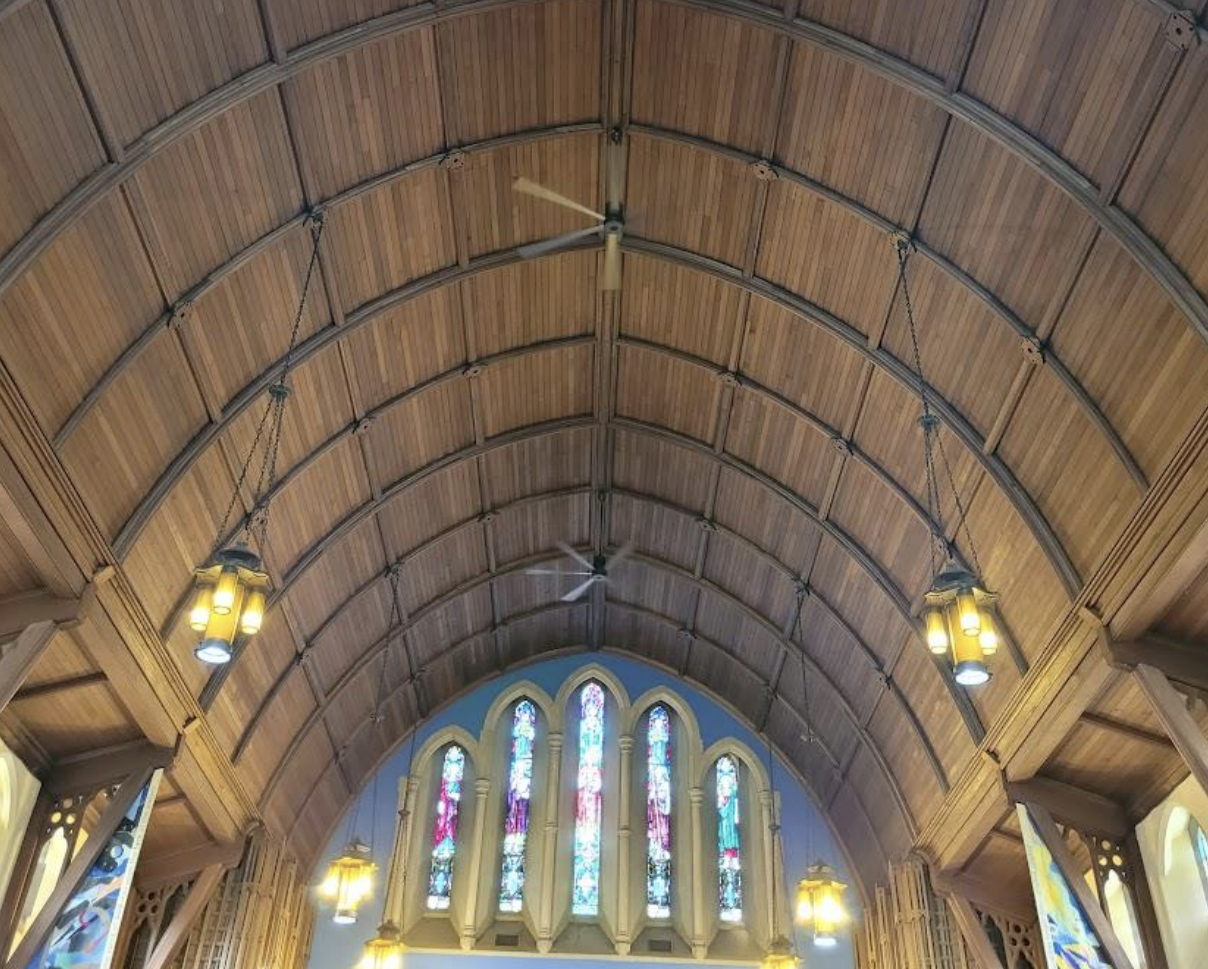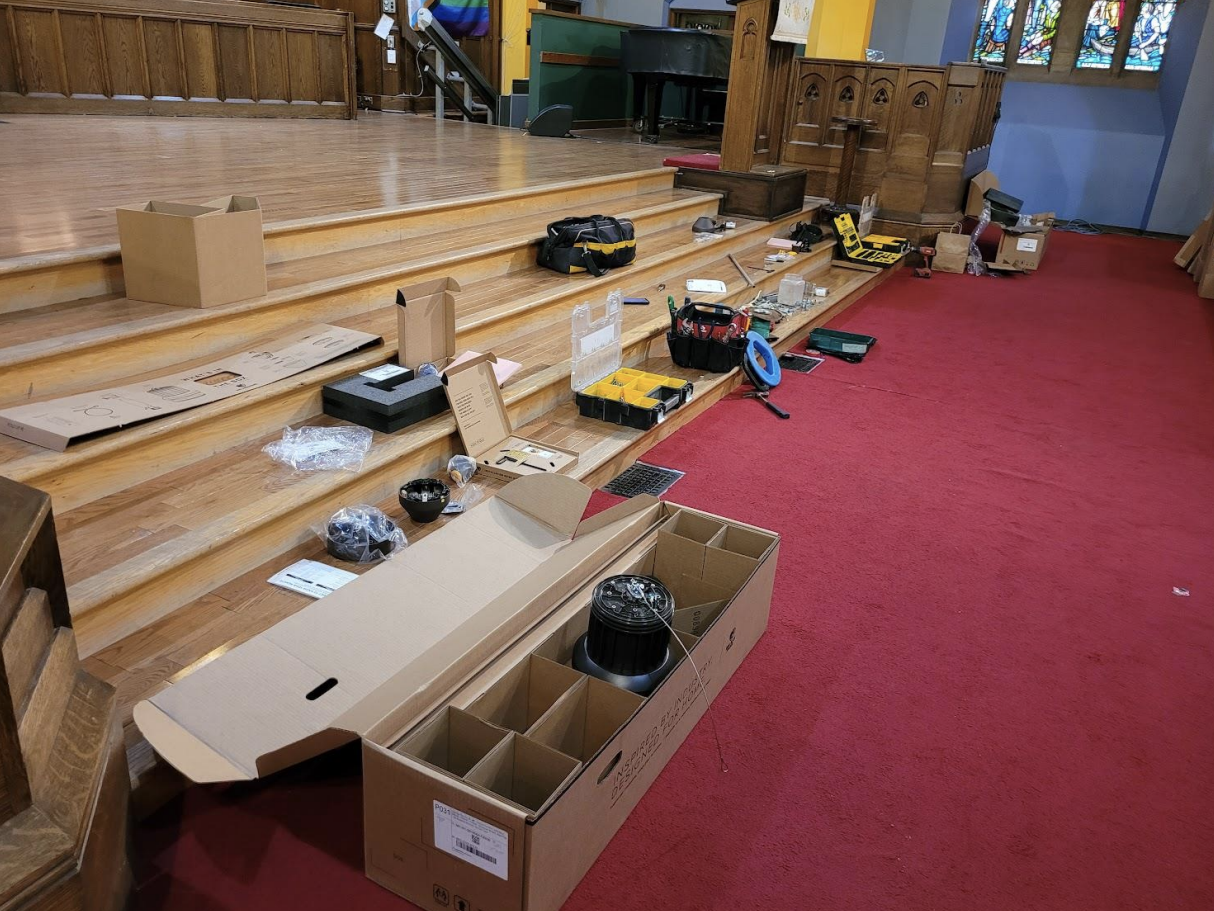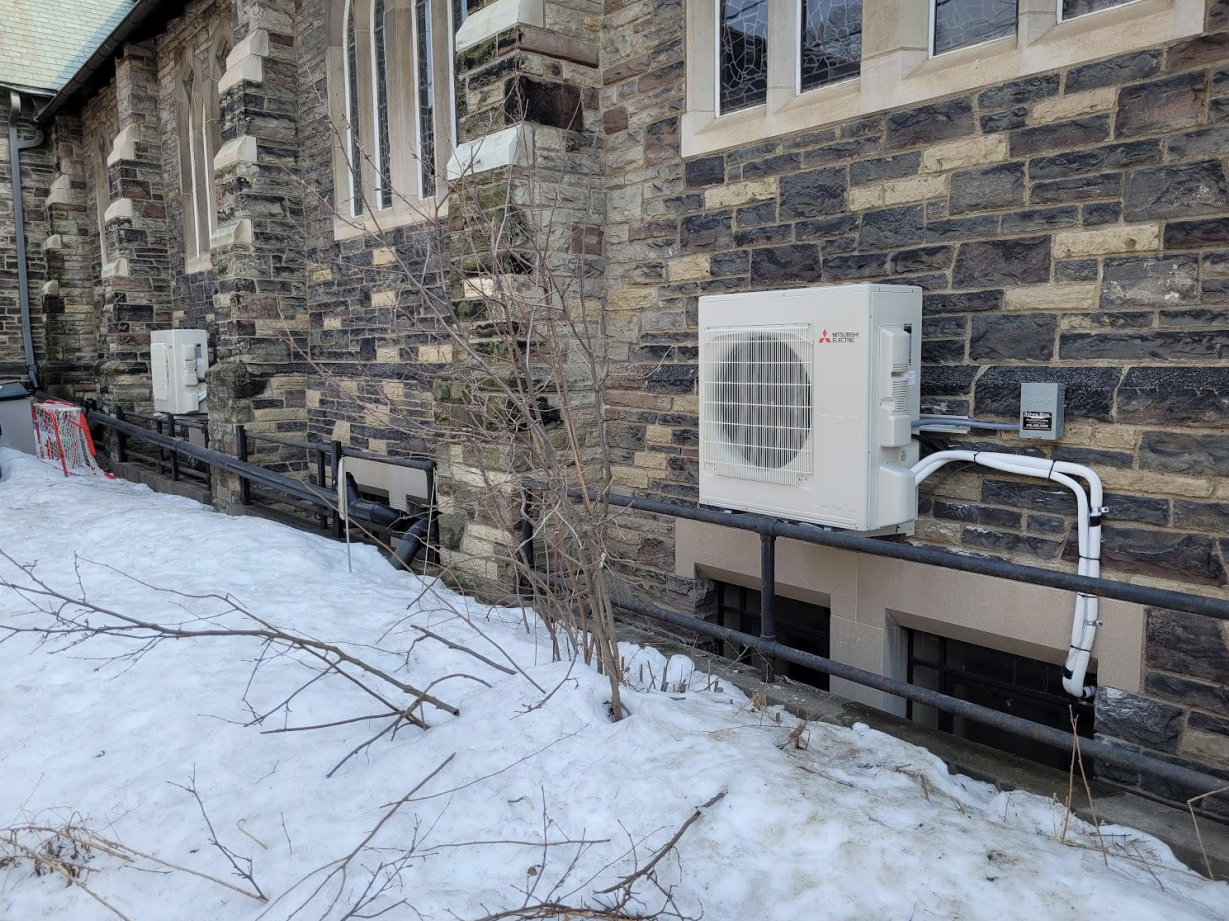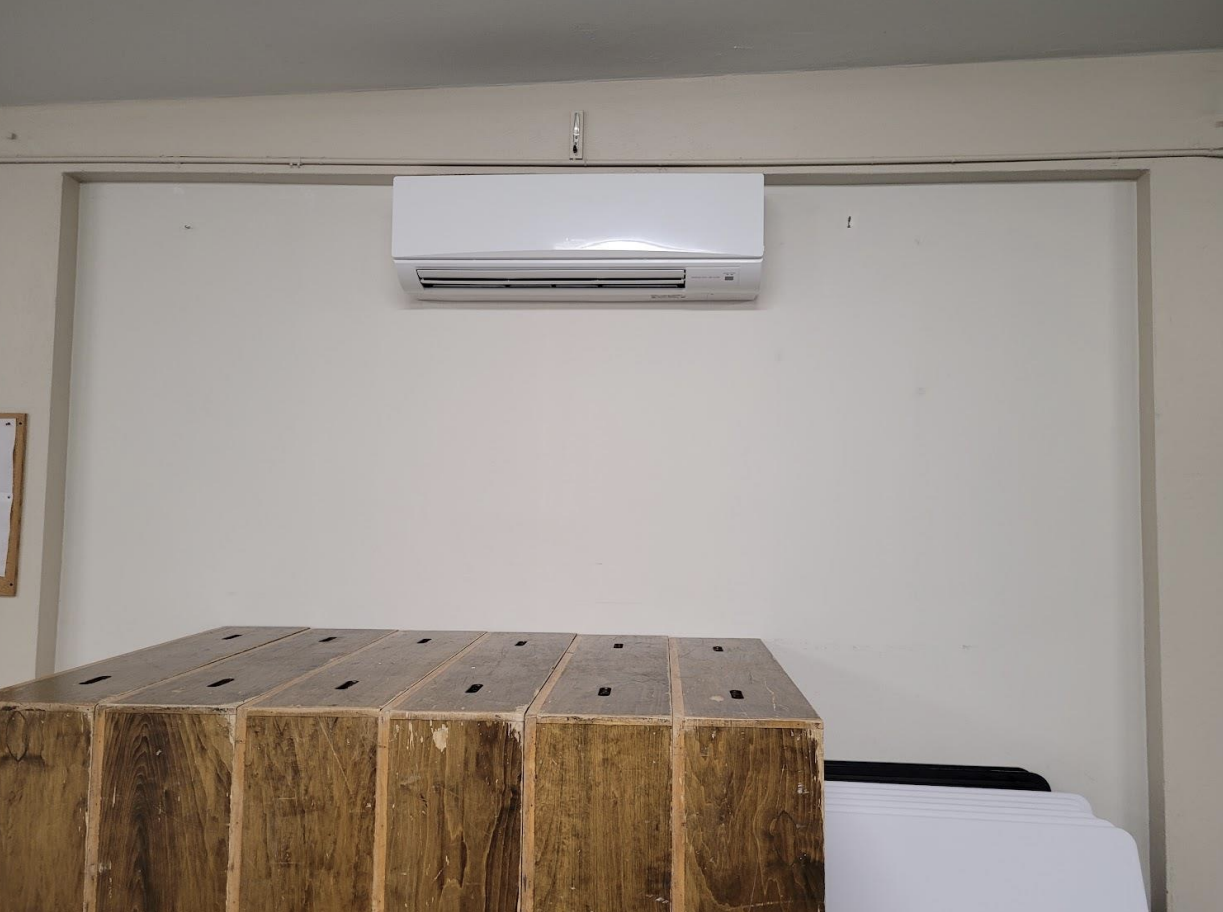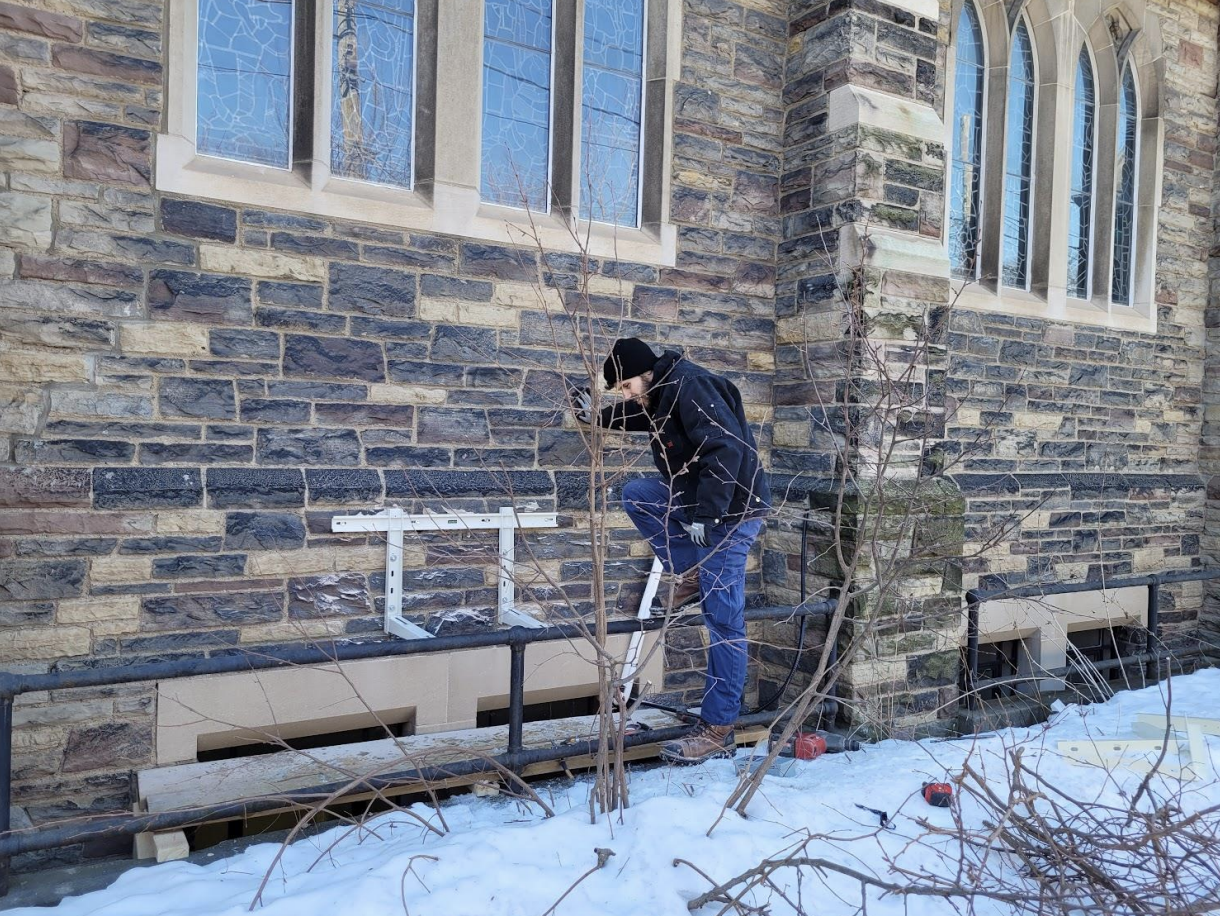Deciding the scale and size of your building renovation projects can be complicated. Even with a handful of experiences with minor fixes and small repairs around your building, larger renovation projects can extend beyond the comfort zone of your community of faith.
With minor energy conservation projects, communities of faith focus on low-hanging fruit. These types of building modifications are low-cost, easy to implement, and offer good value for the money and effort invested. Examples include sealing with caulking or spray foam and upgrading lighting. Though these projects can improve energy conservation, larger-scale projects have the ability to provide a greater return on investment and result in greater energy-saving and carbon-reduction outcomes.
By building up confidence, knowledge, and project management skills – many communities of faith start off small and gradually make their way to larger-scale energy-efficiency and decarbonization building renovation projects.
Building up the Momentum
For Runnymede United Church, in Toronto, Ontario, building greening efforts date back over a decade. Since completing a Green Audit by Faith & the Common Good, in 2011, Runnymede United has engaged in a variety of energy conservation projects.
In 2012, they replaced old T12 4-foot fluorescent bulbs with more efficient T8 bulbs and ballasts, and later with LED T8 bulbs throughout the church. They also replaced outside flood lights with LED flood lights and halogen PAR 38 flood light bulbs and incandescent bulbs with LEDs in their sanctuary.
In 2016, they replaced their atmospheric-fired gas domestic hot water heater with an insulated, power-vented, high-efficiency, gas hot water heater.
From 2016 to 2017, they replaced three simple mechanical thermostats with three programmable Ecobee thermostats. The new thermostats conducted temperature setbacks at night and when the rooms were not in use.
And in 2017, they installed diverters on the wall outlets of their gym heating system, improving air circulation throughout the space – improving comfort, and reducing the accumulation of hot air at the ceiling level. Later that year, the church also added two inches of foam insulation to the gym roof.
Ready for More
Runnymede United was well-equipped. They have an active Property Committee that has engaged in various small-scale energy conservation projects for many years and support from their congregation – including PropCom, a group of property volunteers that meet weekly to work on repair, maintenance, and improvement projects. The church was ready to see greater energy saving.
The church started off with a list of four potential projects and realized they couldn't do all of them. After discussing the potential projects with contractors, experts, their PropCom group, and the finance and property committee, they narrowed their scope to two projects likely to have the most significant impact. These two projects were projected to have the greatest cost-benefit ratio – in terms of cost per dollar saved in operational cost, and per tonne of GHG reduced.
Ceiling Fans
The first project replaced four ineffective and noisy ceiling fans in the sanctuary with four 8-foot modern energy-efficiency fans. The new fans will contribute to reduced energy loss in the church’s large 40-foot high ceiling and 7,000 sq ft space, throughout the entire year. In the colder months, the fans will enable the church to reduce the accumulation of warm air on the ceiling level, significantly reducing heat loss from the uninsulated ceiling. In the warmer months, the fans will improve air circulation at the floor level, improving congregational comfort, with only a small fraction of the energy usage that would otherwise be required for air conditioning.
Heat pumps
The second project replaced the church’s gas-fired steam heating system with heat pumps in the Memorial Hall in their sanctuary. The church installed two 36,000 BTU Mitsubishi split units.
“Compared to our previous gas-fired steam heating system, we hope the efficiency of the heat pumps will reduce our overall energy consumption and our GHG emissions,” states Don Dewees, Chair of Finance and Property Committees at Runnymede United Church.
In addition to providing heat in the winter and cooling in the summer, as well as decarbonizing part of the church’s building operations, the newly installed heat pumps also improved the building’s heating and cooling control.
The previous system that was servicing the Memorial Hall was on the same steam valve as other parts of the building. Through the project, Runnymede United decoupled temperature control in the Hall from the radiators – allowing the church to control heating and cooling ventilation in different parts of the building separately and more precisely.
“We have one boiler that heats all of our space: the sanctuary, Memorial Hall, gym, offices, Sunday School rooms, meeting rooms – everything. Now that the heat pumps are installed, the radiators in Memorial Hall are turned off. The only heat in that room will come from the heat pumps. This will displace whatever steam heat that room has been using.” shares Dewees.
One project at a time
Runnymede United is an example of a community faith that has continued to green their building, one project at a time.
Dewees advises “If your planned projects are not time-constrained or dependent on one another, it's helpful to spread them apart and not do them at the same time”.
“Take a hard look at your building, do some research, and try to identify practical projects to take on and when you can afford to do them. Look for past experiences from communities of faith. Faithful Footprints is a great source to start.” shares Dewees. “Our practical experience from our previous projects helped us understand the magnitude of energy savings that potential projects might have. Our earlier interest and experience in energy conservation were really helpful in providing a good database. We have records of our hydro and gas meters going back 20-25 years. The reports provide a solid base for comparison. We can look at our consumption before the projects and afterward. Because we know more about our previous year's energy consumption, it’s easier to assess the magnitude of the savings that we should expect”.
“The heat pump project is a test force – we have air conditioning with heat pumps and several other heat pumps in other areas in the building. This is the first time we have installed them with the expressed goal of displacing gas in the winter. This coming winter we will find out if the heat pumps provide sufficient heat during the colder months. If the Memorial Hall heat pumps perform well, we will consider additional heat pump installations and further reductions in our greenhouse gas emissions.” adds Dewees.
Are you interested in taking your greening to the next level?
The more you can learn about your building, the more you can save energy, minimize maintenance costs, and maximize the usage of your building. Build up your confidence, knowledge, and project management skills to support your energy conservation and decarbonization retrofit projects. Book a Green Audit and explore the following Faith & the Common Good downloadable resources to learn what more you can do.
Energy Star® Action Workbook for Congregations
Faithful Footprints Program
The United Church of Canada’s Faithful Footprints program offers inspiration, tools, and grants to help its faith communities reduce their carbon footprint. With the Church’s commitment to reducing its greenhouse gasses (GHG) emissions by 80% by 2030, this one-of-a-kind program offers up to $30,000 in grants towards energy conservation and renewable energy projects (conditions apply).
Faith & the Common Good is the delivery partner for the Faithful Footprints program. To date, we have engaged over 400 congregations, camps, and buildings across the country. Your participation in the program puts your faith into action and helps the Church reach its target.
Aleyxa Gates Julien is the PR/Communications Coordinator for Faithful Footprints and can be reached at agatesjulien@faithcommongood.org.


